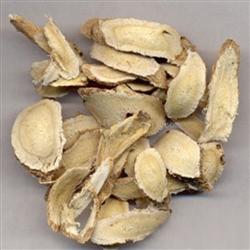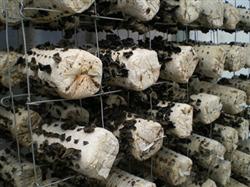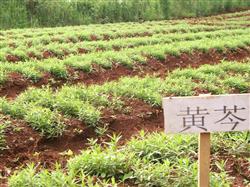How to grow Scutellaria baicalensis Georgi?

How to grow Scutellaria baicalensis Georgi? Please introduce Scutellaria baicalensis. It is warm and cold-resistant, and the underground part can bear a low temperature of-30 ℃. It is resistant to drought and cold, and it can be planted in areas with poor drainage or rainy water. It is easy to cause rotting roots because of poor growth environment. The planting method of Scutellaria baicalensis can refer to the following techniques: first, the planting method of Scutellaria baicalensis Georgi is mainly propagated by seeds, and it can also be propagated by cutting and root division. 1. Direct seeding is generally used for seed propagation. Because the seeds are small and it is difficult to emerge seedlings, the ground must be cleaned up. Before land preparation, 2000,000kg of rotten barnyard manure is applied per mu, deep ploughing and fine raking, the border surface is required to be fine and flat, and the hillside land without irrigation conditions can not be made. Spring sowing in March and April, summer sowing can be sowed in the rainy season or winter sowing, the highest yield in spring sowing, no irrigation conditions, should be sown in the rainy season. Generally, strip sowing is used to sow seeds evenly in a shallow trench with a depth of 3cm according to the row spacing of 25ml / 30cm and cover the soil with a thickness of about 1cm. After sowing, it is gently suppressed, with a sowing rate of 0.50Mu / mu and 1kg. Because the seeds are small, in order to avoid uneven sowing, sowing can be mixed with 5mur10 times fine sand before sowing. Watering in time after sowing, always keep the topsoil moist, the seedlings can emerge in about 15 days, and the weak seedlings that are too dense should be removed after emergence. When the seedlings are 6mur7cm high, the seedlings should be fixed according to the plant spacing of 12mur15cm, and the seedlings should be replenished where there is a lack of seedlings, and the seedlings must be transplanted with soil, and the overdense seedlings can be transferred and watered after planting to facilitate survival. The seeds of Scutellaria baicalensis Georgi are small, and the soil cover is shallow when sowing, often due to drought or uneven topsoil, large soil grains and difficulty in seedling emergence, resulting in a large number of lack of seedlings. The solution: first of all, the soil preparation must be fine and leveled; second, the soil should be watered in time after sowing, often keeping the soil moist until emergence; in addition, planting in dry land should be sown in the rainy season, or it can be covered with plastic (11385, 5m, 75.00 and 0.65%) film or grass to preserve soil moisture, and the mulch can be removed after emergence. In this way, the emergence of seedlings can be guaranteed to be consistent and neat. 2. The most suitable cutting period for cutting propagation is May and June, and the plant is in an exuberant vegetative growth period. the young semi-lignified part of the upper end of the stem is cut (the survival rate of the middle and lower part of the stem is very low), and it is 10 cm long. Then remove the leaves of the lower 2 sections and retain the upper leaves. The slotting machine is best to use sand, or relatively loose sandy loam. Generally should be cut along with the insertion, according to the row spacing of 10 × 5 cm in the bed, timely watering after insertion, and shading, to often spray water to keep the soil moist, but should not be too wet, otherwise the cuttings will become black and rotten. Properly managed, the survival rate can reach more than 90%, and can be transplanted in 40 days after implantation. 3. Split-root propagation should pay attention to selecting high-yield and high-quality plants during harvest, cut off the roots for medicinal use, and leave part of the rhizome propagation materials for use. If you dig and harvest in winter, bury the rhizome in the shade indoors, and plant it in the second spring; if you harvest in spring, divide the rhizome into several pieces, each with several bud holes, and then plant them in the field according to the row spacing of 30 × 20 cm. The survival rate of planting in hillside land by this method is higher, and it is the same as general management after planting. Second, the field management should always keep the soil moist in the seedling stage, and the dry soil should be watered in time, the drought resistance of the adult plant should be enhanced, less watering can be done, and attention should be paid to drainage and waterlogging in the rainy season. At ordinary times, we should also pay attention to loosen the soil and weed at any time. In addition to strengthening general management, attention should also be paid to fertilization. In the first year, fertilization should be carried out for the first time after seedlings are fixed. 500 kg of human feces and urine or 5 kg of urea should be applied per mu, and 30 kg of ammonium phosphate should be applied from June to July. 50kg rotten cake fertilizer was applied after turning green in the second and third year, and 30ml / 40kg ammonium phosphate fertilizer was applied before ridge closure in late June. When applying fertilizer, it should be ditched, covered with soil and watered. Third, harvest 2-3 years after harvesting and processing planting. Generally at the end of autumn after the stem and leaf withered or after the spring thaw, before the bud mining, because the root grows deep, should dig deeply, prevent to break the root. After the roots are dug out, shake off the soil, cut off the stems and leaves, sun until half dry, bump off the outer skin, and then dry or dry quickly. It can also be sliced and then dried in the sun, but it can not be washed with water or sliced fresh, otherwise it will turn green in the broken skin. When drying, you should avoid exposure to strong light, as excessive exposure will make the yellow turn red. At the same time, it is also necessary to prevent being wet by the rain, because the roots of Scutellaria baicalensis Georgi turn green and then black after being drenched in the rain, which will affect the quality. The finished product is solid without holes and the interior is bright yellow. Generally 3Mel 4 kg fresh root can be processed into 1 kg of practical information. The yield of dry goods per mu is 200 Mu, 300 kg, and the high one can reach more than 380 kg. Click to get more planting techniques of Scutellaria baicalensis Georgi
- Prev

What should I pay attention to when cultivating black fungus?
What should I pay attention to when cultivating black fungus? Please introduce black fungus is aerobic, wet, cold-resistant fungi. The relative humidity of the space is kept above 90% after opening. After 15 days, a large number of ear buds can be formed. After the formation of open ears, increase the amount of ventilation, 3~4 times a day, 1 hour each time, under the condition of ensuring relative humidity above 90%.
- Next

How to fertilize Scutellaria baicalensis Georgi?
How to fertilize Scutellaria baicalensis Georgi? Please introduce the method of fertilization for planting Scutellaria baicalensis. In the first year, the first fertilization should be carried out after the seedlings are fixed. 500 kg of human feces and urine or 5 kg of urea should be applied per mu, and 30 kg of ammonium phosphate should be applied from June to July. After turning green in the second and third year, apply rotten cake fertilizer 40Mel 50kg, 6.
Related
- Fuxing push coffee new agricultural production and marketing class: lack of small-scale processing plants
- Jujube rice field leisure farm deep ploughing Yilan for five years to create a space for organic food and play
- Nongyu Farm-A trial of organic papaya for brave women with advanced technology
- Four points for attention in the prevention and control of diseases and insect pests of edible fungi
- How to add nutrient solution to Edible Fungi
- Is there any good way to control edible fungus mites?
- Open Inoculation Technology of Edible Fungi
- Is there any clever way to use fertilizer for edible fungus in winter?
- What agents are used to kill the pathogens of edible fungi in the mushroom shed?
- Rapid drying of Edible Fungi

